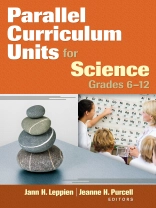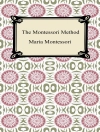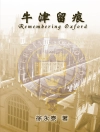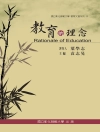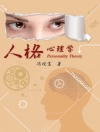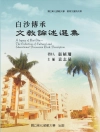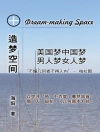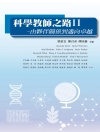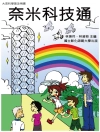‘Teachers at various stages of professional development in curriculum design will find these materials powerful examples that will guide their growth and development and sharpen their skills.’
—Mary L. Slade, Professor
James Madison University, Harrisonburg, VA
Supercharge your science curriculum to challenge all students
Based on the best-selling book The Parallel Curriculum, this professional development resource gives multifaceted examples of rigorous learning opportunities for science students in Grades 6–12. The four sample units revolve around genetics, the convergence of science and society, the integration of language arts and biology, and the periodic table. The editors and contributors provide user-friendly methods for creating more thoughtful lessons and show how to differentiate them for the benefit of all students. Included are field-tested and standards-based strategies that guide students through:
- Exploring the nature of knowledge
- Discovering connections between science and other subjects
- Deepening science comprehension according to their interests and abilities
- Connecting science to society through the study of genetics, historic events, literature, and chemistry
Each unit includes subject matter background, a content framework, study components, teacher reflections, and sample lessons. Also available are online content tools such as handouts, Power Point presentations, and research activities. Breathe new life into science learning with this powerful guidebook written by master educators!
قائمة المحتويات
About the Editors
About the Contributors
Introduction
1. Genetics: Our Past, Present, and Future: A Middle School Unit for Grades 6-8 – Lindsey Asbury
Introduction to the Unit
Background to the Unit
Content Framework
Unit Components and Rationale
Unit Sequence, Description, and Teacher Reflection
Lesson 1.1: Preassessment and Unit Introduction (Dominant and Recessive Genes)
Lesson 1.2: Punnet Squares and Predicting Heredity
Lesson 1.3: DNA
Lesson 1.4: DNA Extraction Lab
Lesson 1.5: DNA Fingerprinting and Crime Lab Investigation
Lesson 1.6: Genetics and European History
Lesson 1.7: Genetics in Practice
Unit 1 Appendixes
2. The Exxon Valdez Oil Spill: What′s at Stake? The Convergence of Science and Society, Grade 6 – Julie Martinek
Introduction to the Unit
Background to the Unit
Content Framework
Unit Assessments
Unit Sequence, Description, and Teacher Reflection
Lesson 2.1: Pretest: The Cause-and-Effect Relationship within a System
Lesson 2.2: Introduction to the Exxon Valdez Problem
Lesson 2.3: Setting Up the Stakeholders? Research Activities
Lesson 2.4: Prioritizing the Sites and Constructing a Persuasive Argument/Essay
Unit 2 Appendixes
3. Systems: An Integrated Approach to Science and English Instruction, Grades 9-10 – Kristina J. Doubet
Introduction to the Unit
Background to the Unit
Content Framework
Lesson/Unit Assessments
Lesson Sequence and Teacher Reflection
Lesson3.1: An Introduction to Systems
Lesson 3.2 (English): The Pearl, Part 1 (Chapters 1-3)
Lesson 3.3 (Science): Introducing Cell Structure
Lesson 3.4 (English): The Pearl, Part 2 (Chapters 4-6)
Lesson 3.5 (Science): Movement in Cells
Unit 3 Appendixes
4. The Periodic Table: Getting to Know and Appreciate the Elements and Their Families, Grade 10 – Fie Budzinsky
Background to the Unit
Content Framework
Overview of Key Lesson Ideas/Purposes
Lesson 4.1: The Elements: Getting to Know You
Lesson 4.2: The Elements: Up Close and Personal
Lesson 4.3: We Are Family!
Lesson 4.4: The Elements in Action
Lesson 4.5: Breaking News
Unit 4 Appendixes
عن المؤلف
Jeanne H. Purcell is the consultant to the Connecticut State Department of Education for gifted and talented education. She is also director of UConn Mentor Connection, a nationally recognized summer mentorship program for talented teenagers that is part of the NEAG Center for Talent Development at the University of Connecticut. Prior to her work at the State Department of Connecticut, she was an administrator for Rocky Hill Public Schools (CT); a program specialist with the National Research Center on the Gifted and Talented, where she worked collaboratively with other researchers on national issues related to high-achieving young people; an instructor of Teaching the Talented, a graduate-level program in gifted education; and a staff developer to school districts across the country and Canada. She has been an English teacher, community service coordinator, and teacher of the gifted, K-12, for 18 years in Connecticut school districts and has published many articles that have appeared in Educational Leadership, Gifted Child Quarterly, Roeper Review, Educational and Psychological Measurement, National Association of Secondary School Principals’ Bulletin, Our Children: The National PTA Magazine, Parenting for High Potential, and Journal for the Education of the Gifted. She is active in the National Association for Gifted Children (NAGC) and serves on the Awards Committee and the Curriculum Committee of NAGC, for which she is the co-chair for the annual Curriculum Awards Competition.
